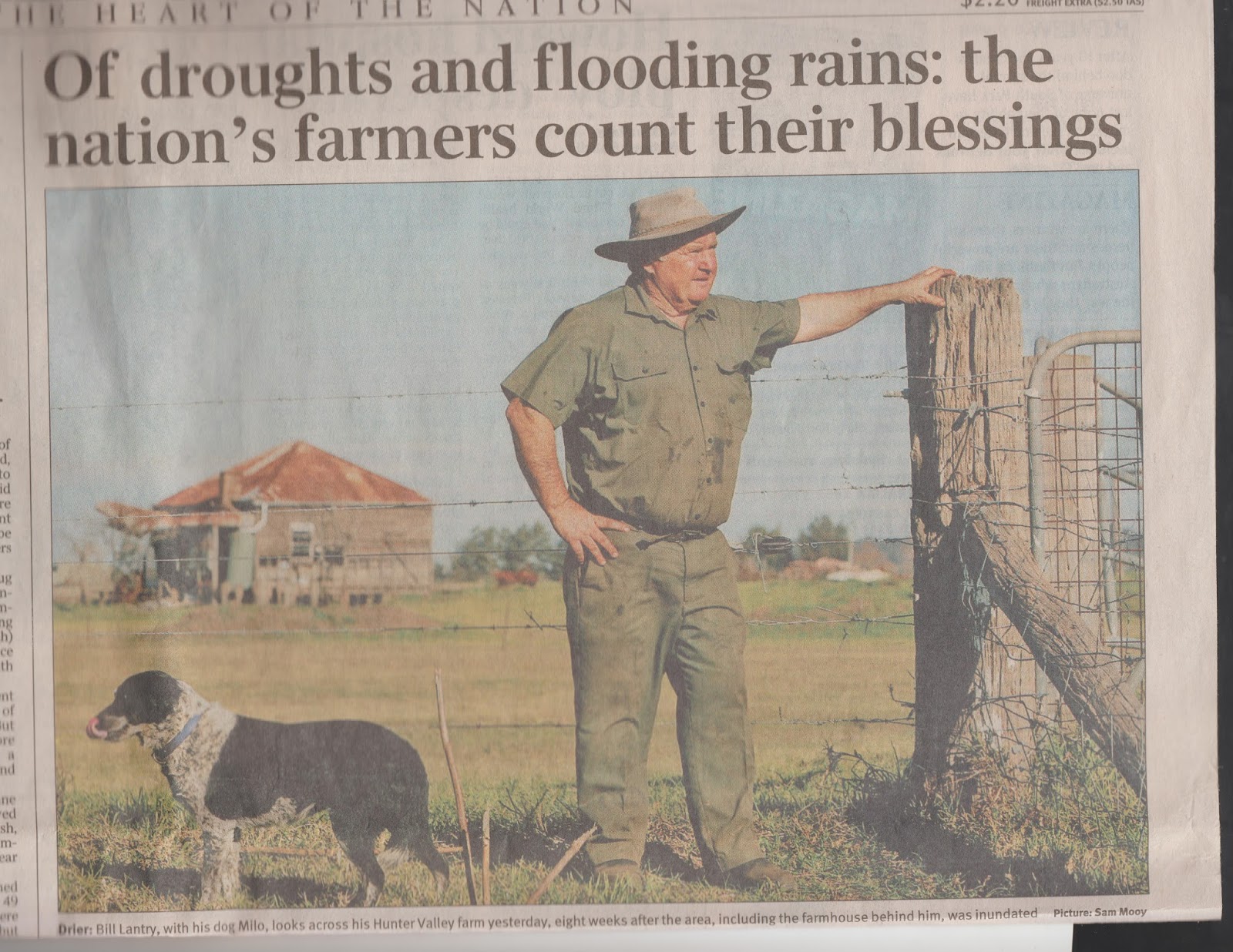Stapleton, John. Weekend Australian [Canberra, A.C.T] 04 Aug 2007: 1.
Show highlighting
Abstract
Nearly eight weeks later, the cattle farmer simply shrugs at the memory of the floods and the damage they caused. Like other old farmers in the region, Mr [Bill Lantry] knows floods bring blessings in their wake. The rich silt droppped by the floodwaters is the key to a profitable year of luxurious pasture growth and fat cattle.
“It is low-lying country, this is what God’s nature is all about, it floods, then it’s dry, it’s a cycle,” Mr Lantry told The Weekend Australian this week as he recalled the days when he could cross his paddocks in a boat.
Weeks later, another low pressure system created havoc in Victoria’s Gippsland region. At Mt Baw Baw, 355mm fell in a little over seven hours, while records showed that Gabo Island had its heaviest rainfall in 145 years. With the rain came record low temperatures. The Bureau of Meterology’s National Climate Centre recorded a mean temperature for the month that was the coldest since at least 1950. Queensland and the Northern Territory had their coldest Junes on record.
ONE morning in June, Bill Lantry stood on his back step with his dogs Milo and Cal and watched the water lap at his feet.
With his property under water during the Hunter Valley floods — created by 350mm of rain in three days, more than in the entire previous year — Mr Lantry looked across at his neighbouring property, a disused farm known as Crazy Creek, where the water was halfway up its walls.
Nearly eight weeks later, the cattle farmer simply shrugs at the memory of the floods and the damage they caused. Like other old farmers in the region, Mr Lantry knows floods bring blessings in their wake. The rich silt droppped by the floodwaters is the key to a profitable year of luxurious pasture growth and fat cattle.
But although Mother Nature produced perfect growing conditions with sunny day followed by sunny day throughout July, rainfall levels for the month were reminiscent of those seen at theheight of the drought that
burnt the country brown in 2005.
“It is low-lying country, this is what God’s nature is all about, it floods, then it’s dry, it’s a cycle,” Mr Lantry told The Weekend Australian this week as he recalled the days when he could cross his paddocks in a boat.
In the month after the flood, Mr Lantry stocked his property with cattle to take advantage of the lush conditions. The land has rejuvenated and even the view of the abandoned farmhouse at Crazy Creek, once dry and dismal, has taken on a picturesque charm.
The storms that began on June 9 bucketed the region and led to floods that left nine people dead. Figures released this week by the Insurance Council of Australia show claims have now passed the $750 million mark.
Weeks later, another low pressure system created havoc in Victoria’s Gippsland region. At Mt Baw Baw, 355mm fell in a little over seven hours, while records showed that Gabo Island had its heaviest rainfall in 145 years. With the rain came record low temperatures. The Bureau of Meterology’s National Climate Centre recorded a mean temperature for the month that was the coldest since at least 1950. Queensland and the Northern Territory had their coldest Junes on record.
Yet the meterological tide had turned before the clouds had cleared. Rain levels were 30 per cent below average in parts of NSW in July. Instead of the usual 10 days of rain producing an average of 97.8mm, much of the state received 67.2mm and that fell over just two days.
Figures released yesterday by the National Climate Centre show the past year has been drier than normal across all states and territories, except the Northern Territory.
For the 12-month period to July there were serious to severe rainfall deficiencies over southern
Continued — Page 8
From Page 1
and eastern Australia in an arc extending across the Eyre Peninsula and southeastern South Australia, much of Victoria, and across the tablelands and western slopes of NSW. Large parts of Queensland, Western Australia and Victoria were also very dry.
But while the rains of June died away, the big chill that blew in during the month continued into July.
The duty forecaster for the NSW Bureau of Meteorology, Jane Golding, said that last month was unusual not just for the lack of wet days but also for its exceptionally cold nights, colder than it had been in any July in 21 years.
But with rainfall levels up 53 per cent on normal across the country in June, it will be the dramatically wet conditions that will be remembered on the plains and in the paddocks as Australia’s farmers await the next turn in the weather cycle.


